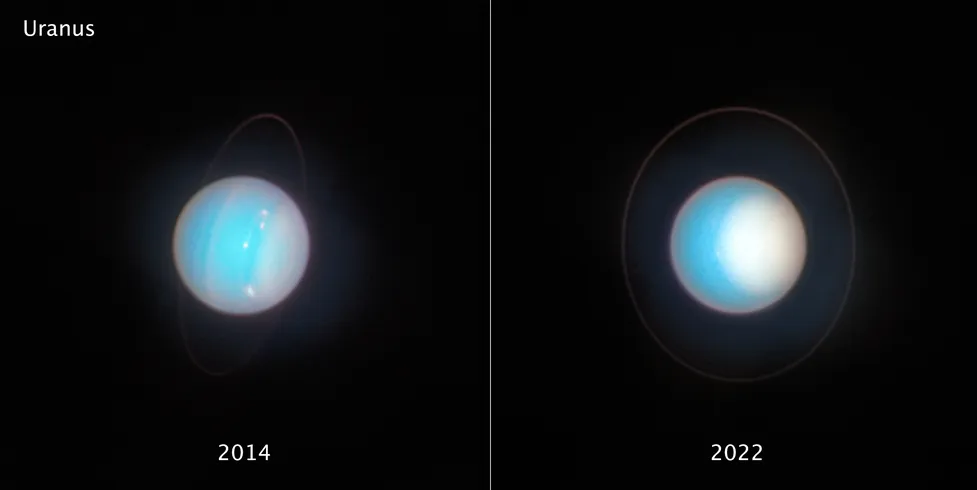
NASA/ESA Hubble Space Telescope, one of the most powerful telescopes built by the scientific communities, has recorded the changing weather on Jupiter and Uranus in awe-inspiring new images. The telescope, designed to keep an eye on the outer planets of the solar system has also been constantly monitoring the seasonal change and atmospheric switch across the two giant planets by giving a close-up look.
“Hubble’s sharpness and sensitivity keep an unblinking eye on a kaleidoscope of complex activities over time,” explains NASA.
Launched in 2014, Hubble observes the celestial bodies from other spacecraft such as Juno, a Lockheed Martin-built NASA space probe orbiting the planet Jupiter. Hubble also recorded stunning observations for NASA, the European Space Agency, and the Italian Space Agency’s Cassini mission to study the planet Saturn. It was also used during the Voyager 1 and 2 probe that took advantage of a rare planetary alignment and studied the outer solar system with all four giant planets in line between 1979 and 1989. Hubble telescope’s Outer Planet Atmospheres Legacy (OPAL) Program has been key in observing different seasons and atmospheres on other planets.
Jupiter & Uranus atmosphere and weather from Hubble
Hubble has been able to observe that Jupiter’s weather is mostly stormy at low northern latitudes. The planet shows a “prominent string of alternating storms” that are visible, forming a “vortex street” in astronomers’ language, according to NASA’s statement.
“There’s a pattern of anticyclones and cyclones in the images of the Hubble on Jupiter. These two are locked together in a way of a “machine with alternating gears moving clockwise and counterclockwise,” said NASA.
Sometimes, the storms come in the vicinity of each other and merge into a wilder and even larger storm, “potentially rivalling the current size of the Great Red Spot.” Jupiter’s orange-coloured moon Io was first captured on January 6, 2023, is seen shining among the planet’s multicoloured clouds. “Sulfur takes on various hues at different temperatures, which is why Io’s surface is so colourful,” scientists and astronomers explain.
“Hubble’s resolution is so sharp that it can see Io’s mottled-orange appearance, related to its numerous active volcanoes. These volcanoes were first discovered when the Voyager 1 spacecraft flew by in 1979,” NASA wrote.
















